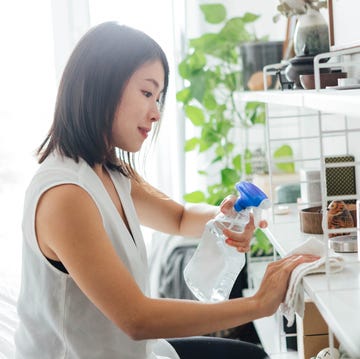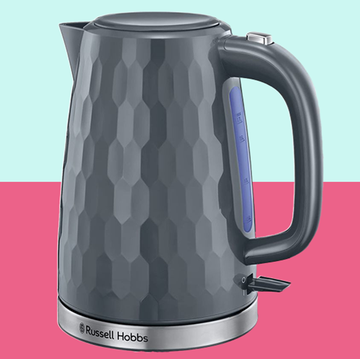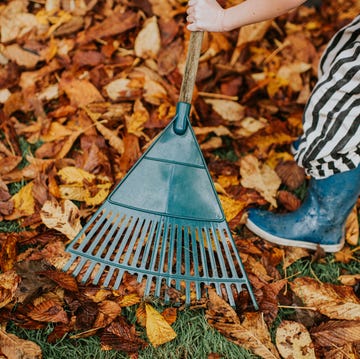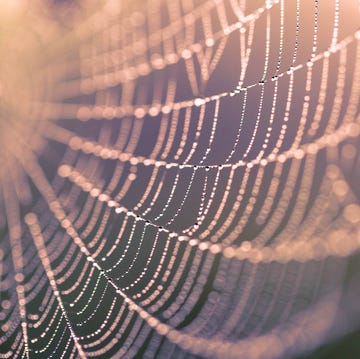Few things have blossomed in popularity quite like the humble houseplant. Millennial and Gen Z plant lovers have turned #PlantParenthood into a full-blown lifestyle. And with this new hobby comes responsibility—we must protect them from those who seek to cause them harm. Namely… bugs.
Our indoor plants ask for little more than sunlight, water, and the occasional pep talk. They sit pretty, adding instant calm and style to our homes. Oh, to be a sun-drenched monstera or a perfectly pampered peace lily. But even the most low-maintenance greenery isn't immune to an invasion of near-invisible pests.
Because houseplant pests are a lot more common than you think—and many plant parents struggle to spot them, prevent them, or (most importantly) get rid of them for good. That’s where I come in! I’ve dug into the research, so you don’t have to, rounding up the best tips to keep your indoor jungle thriving—and pest-free.
What to read next
Common plant pests and how to spot them
Fungus gnats
If you see tiny black flies buzzing around your plants or sitting on the soil surface, you may have a fungus gnat situation, and they’re as lovely as they sound. Their larvae, which live in the soil, munch on plant roots—especially in overly moist conditions. Look out for wilting leaves (despite moist soil), poor growth, and tiny flies hovering near the plant. Need to know more? Our household advice editor did a whole guide on how to banish fungus gnats after she found a swarm in her home.
Spider mites
Fine webbing on leaves and stems, plus yellow speckling or mottled foliage could be signs of spider mites. These microscopic pests thrive in warm, dry conditions and suck sap from leaves. Look for wispy webs between the leaves and stem joints, and tiny, moving dots under leaves.
Aphids
A particularly common pest, Aphids are soft-bodied, pear-shaped bugs that cluster around new growth, stems and buds. Watch for curling or distorted new leaves and tiny green, black or brown insects on stems. They leave behind a characteristic sticky residue on leaves and stems, which is one of the main causes of mould in houseplants.
Scale insects
These resemble brown or tan shell-like bumps on stems and the undersides of leaves. They may cause your plant's leaves to yellow or drop, and plants can develop sticky patches from their honeydew.
Thrips
Thrips look like silvery streaks or speckling on leaves; you might also spot some black specks nearby them – these are their droppings. Lovely. These tiny, slender pests are fast-moving and hard to spot without close inspection. Look for deformed or scarred new leaves or discoloured patches on older ones.
Mealybugs
White, fluffy, cotton-like clusters along stems, leaf joints or undersides could be mealybugs. These sap-sucking pests weaken plants and can spread quickly. Keep an eye out for sticky leaves and visible white fluff; plants may look wilted or drop leaves.
How to prevent pests before they move in
When it comes to houseplant pests, I always say, the best defence is a good offence. A little prevention now can save you a whole lot of plant drama later. Here’s how to keep those bug(bears) at bay.
Water wisely
Every plant has its own watering needs — this isn’t a “one-size-fits-all” situation! So always research each plant's individual needs. Overwatering creates damp, soggy soil that fungus gnats love, while under-watering can leave plants stressed and vulnerable to attacks. The general sweet spot? Keep soil moist but never drenched. A well-hydrated, happy plant is naturally more resilient against pests.
Mix pest control into the soil
Get ahead of the problem from the start. When potting up your plants — or refreshing their soil — mix in a natural pest control product to target soil-dwelling pests before they take hold. Mosquito Bits works great for fungus gnats, Neem cake is a great natural deterrent and gentle fertiliser for sensitive or fragile plants and food-grade diatomaceous earth should sort out any crawling pests.
These are all plant-safe and can help keep unwanted visitors from setting up camp in your compost.
Keep leaves clean
It may sound obvious but this is an incredibly simple way to stay on top of your plants' hygiene – dirty plants lead to dirty bugs, after all. Make sure you’re dusting or wiping leaves down with a damp cloth once a week. Getting rid of dust and debris not only looks nicer, it nixes potential hiding spots for pests.
Quarantine the infected
If you spot pests on one of your plants, don’t panic. Swiftly move the affected plant away from its leafy neighbours. Pests spread fast from pot to pot, and isolating the problem can stop a full-blown infestation in its tracks. One plant with bugs? Manageable. An entire indoor jungle under siege? Much trickier.
How to get rid of the invasion
If your poor plants have already been invaded by the bug-eyed enemy, you'll want some effective methods for removal that won't end up damaging your indoor garden in the process.
Give them a good rinse
For pests like aphids, spider mites and thrips, sometimes the simplest solution is best. Take your plant to the sink, shower, or even outside, and rinse the leaves thoroughly with a strong stream of lukewarm water. This physically knocks pests off and washes away eggs and larvae. Follow up with a gentle wipe to remove any stragglers. Just aim towards the branches and leaves so you don’t end up drowning the roots.
Wipe down with soapy water
Mild soap works wonders! Mix a few drops of fragrance-free dish soap (around ½ teaspoon per litre of water) and gently wipe down affected leaves and stems with a soft cloth or sponge. This smothers soft-bodied pests like aphids, mealybugs and spider mites. Test on a small area first to avoid leaf damage.
Apply neem oil spray
Neem oil is a natural, plant-safe pesticide that works against a wide range of pests — think mealybugs, spider mites, aphids and scale insects. Mix according to the bottle’s instructions and spray thoroughly, coating both the tops and undersides of leaves. It works by disrupting pests’ feeding and breeding cycles — plus, it leaves your plants with nice shiny leaves!
Use sticky traps for flying pests
For flying bugs like fungus gnats and whiteflies, yellow sticky traps are your new best friend. These traps lure and catch the adults, helping to reduce their numbers fast. Combine this with a soil treatment (like Mosquito Bits or beneficial nematodes) to break the life cycle completely.
Try insecticidal soap spray
For a more targeted, ready-made solution, insecticidal soap sprays are a plant parent’s secret weapon. They’re specially formulated to zap soft-bodied pests like aphids, spider mites, mealybugs and whiteflies — without harming most houseplants. Look for a product labelled safe for indoor use, spray thoroughly (especially under leaves), and reapply weekly until the pests are gone. Brands like Ecofective or SB Plant Invigorator are great for this.
Prune heavily infested areas
Sometimes, the best option is to simply snip away the problem. Cut off badly affected leaves or stems (especially with pests like scale insects or heavy mealybug infestations) and dispose of them far away from your houseplants. This helps stop the spread and encourages healthy regrowth.
Use biological controls (yes, they can be indoor-friendly!)
If you’re battling a persistent infestation — particularly of soil pests like fungus gnats — consider beneficial organisms like nematodes (microscopic worms) or predatory mites. Products like Nemasys or Natural Grower Nematodes are safe for indoor use and work by naturally hunting down pests in the soil or on leaves. They're totally invisible to you but deadly to bugs!
And if all else fails, the Good Housekeeping Institute has reviewed the best indoor plant delivery services in the UK...























